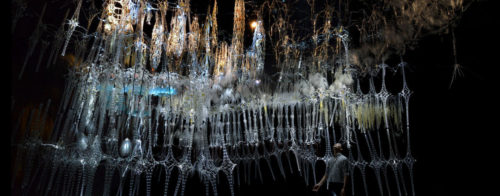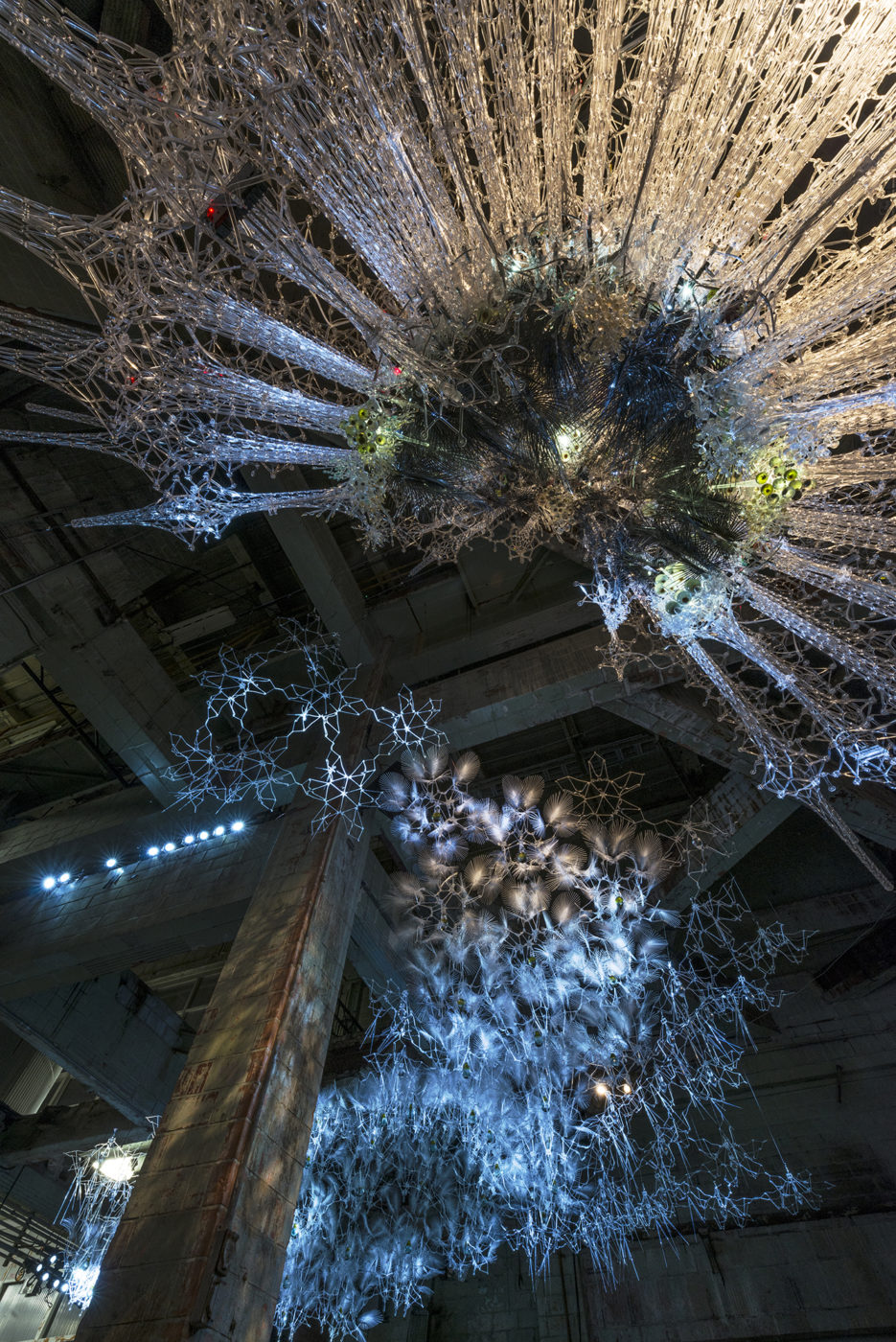Can architecture integrate living functions?
How can we design kinetic, living architecture that engages with visitors during extended interactions and enhances human experience in an immersive environment?
How do humans respond to these evolving interactions, in a process of mutual adaptation?
Can architecture integrate living functions? Could future buildings think, and care? The Living Architecture Systems Group brings together researchers and industry partners in a multidisciplinary research cluster dedicated to developing built environments with qualities that come close to life— environments that can move, respond, and learn, with metabolisms that can exchange and renew their environments, and which are adaptive and empathic towards their inhabitants. Supported by Social Sciences and Humanities Research Council funding and contributions from numerous partners, LAS is focused on developing innovative technologies, new critical aesthetics, and integrative design working methods, helping equip a new generation of designers with critical next-generation skills and critical perspectives for working with complex environments.
The research of LAS has the potential to change how we build by transforming the physical structures that support buildings and the technical systems that control them. Intelligent controls, machine learning, lightweight scaffolds, kinetic mechanisms, and self-renewing synthetic biology systems are being integrated in prototypes, exploring how these different systems might be fully integrated into new generations of buildings. Specializations are in advanced structures, mechanisms, control systems, machine learning, human-machine interaction, synthetic biology, and psychological testing. The combined expertise of the group offers unique integrated design, prototyping and public demonstration facilities.
The partnership is structured by six discipline streams: Scaffold led by Philip Beesley (Waterloo Architecture), Synthetic Cognition led by Dana Kulic (Electronic and Computer Engineering, Waterloo), Metabolism led by Rachel Armstrong (Architecture, Newcastle) Human Experience led by Colin Ellard (Psychology, Waterloo) Interdisciplinary Methods led by Rob Gorbet (Knowledge Integration, Waterloo), and Theory led by Sarah Bonnemaison (Architecture, Dalhousie).

These streams are integrated within a six-year research plan that move in cycles from experimental prototypes to integrated public scales of implementation. Growing in scale and complexity from prototype interiors to prototype envelopes, researchers will investigate how near-living architecture can integrate machine-based behaviors and chemical exchanges. In parallel the group will investigate the cognitive, physiological, and emotional responses of occupants.
Long-term objectives of the LAS include development of advanced prototype envelopes that have achieved fully integrated self-renewing intelligent, empathetic systems, capable of functioning within existing inhabited buildings. This long-range research has the objective of finding practical strategies for achieving resilience and adaptability in states of disequilibrium, such as those currently occurring in the natural environment.

